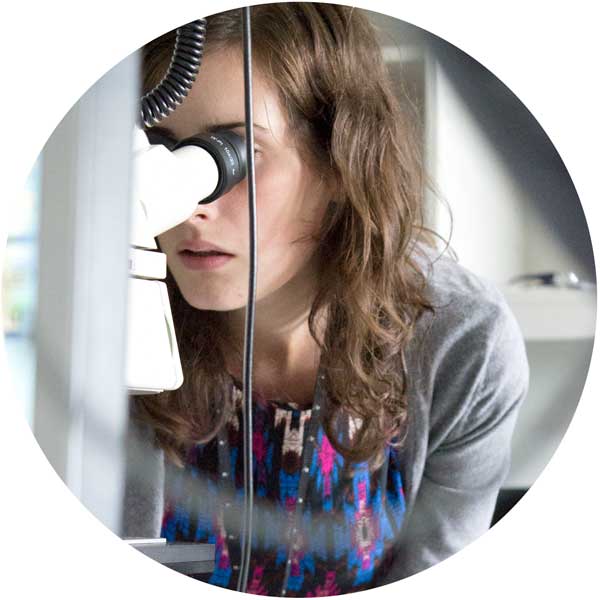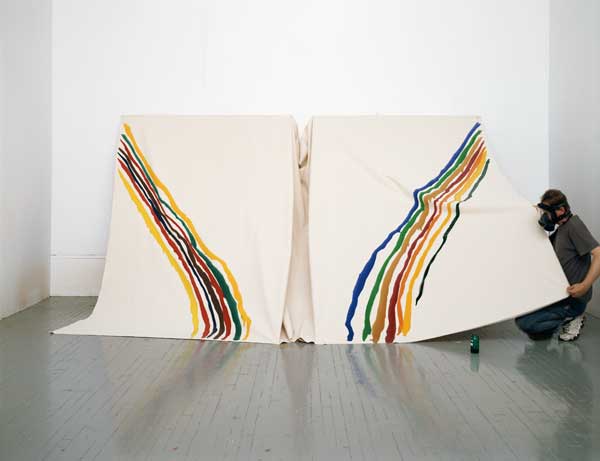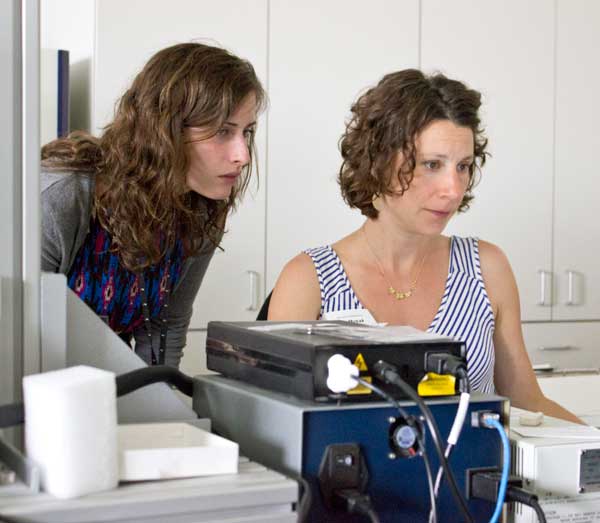Why would the Harvard Art Museums have chemists, physicists, and geologists on its staff?
Staff scientists at the museums help curators and conservators determine how and when an object was made and with what materials. On any given day, a visitor to the analytical lab of the Straus Center for Conservation and Technical Studies might discover scientists using a microfader on a fluorescent print, which can tell them how long and under what lighting conditions it is safe to exhibit the work without having it fade. Or one might spy a scientist using a Raman microscope to identify the pigments found on a centuries-old illustrated manuscript.
Scientists need training to be effective in a museum context, but for many years there was no clear pathway into museum work.
In 2002 the Andrew W. Mellon Foundation offered the Harvard Art Museums a generous grant to launch a postdoctoral fellowship in conservation science. Now, 10 years and 5 Fellows later, the foundation has awarded us a challenge grant to help establish an endowment that will ensure the fellowship’s future.
Senior Conservation Scientist Narayan Khandekar and Patricia Cornwell Conservation Scientist Katherine Eremin worked with Straus Center director Henry Lie to develop the fellowship program, and they oversee the Fellows, who are selected through a competitive recruiting process.
The museums’ highly collaborative environment is an ideal setting for scientists to develop, share, and apply their expertise. Beyond investigating and analyzing the material nature of objects in our collection, Fellows participate in conferences and organize workshops and symposia, which bring together curators, conservators, and art historians.
Glenn Gates, the museums’ first Fellow, noted that the position isn’t just about analyzing data: “It’s about participating in the dialogue with conservators and curators. The fellowship’s greatest product is the emphasis on training the scientist to work with curators and conservators, to solve problems as a team.”
Gates, who received his PhD in polymer physics, worked with the Straus Center’s conservation team to treat the Boston Public Library’s famed John Singer Sargent murals. He also worked with our Center for Technical Study of Modern Art to complete a research project on the museums’ Morris Louis paintings, partnering with outside laboratories to explore innovative techniques for cleaning the unprimed raw canvas on which the artist painted.
Monthlong research visits at peer museums are another vital feature of the fellowship program. Through stays at institutions such as the National Gallery of Art in Washington, DC, and the Louvre in Paris, Fellows gain new perspectives on how conservation science contributes to the knowledge and understanding of objects in museum collections.
Eighty years ago, Harvard’s Fogg Museum was the first art museum in the United States to apply scientific methods to study artists’ materials and techniques. Continuing the museums’ tradition of training museum professionals, the fellowship program is widely recognized. Michele Marincola, New York University’s Sherman Fairchild Chairman and Professor of Conservation, calls the program “superb, and unique in this country for its scope, duration, and excellence. The generosity of the Andrew W. Mellon Foundation in funding these fellowships has allowed the Harvard Art Museums to expand the capacity for research of the collections to an extraordinary degree.”
All the former Fellows now work as art conservation scientists at leading institutions in the field: Glenn Gates is at the Walters Art Museum, in Baltimore; Jens Stenger is at the Harvard Art Museums; Lynn Lee is at the Getty Conservation Institute, in Los Angeles; and Erin Mysak is at Yale University’s Center for Conservation and Preservation.
The museums’ current Fellow, Georgina Rayner, earned her PhD in polymer chemistry. Soon after her fellowship began, in January of this year, she was involved in complex conservation treatments for objects such as a 13th-century stained-glass window from Canterbury and one of Joseph Beuys’s multiples.
Rayner describes her fellowship as an “opportunity to contribute toward preserving something I care about, so that it may be enjoyed by future generations.” We hope that this challenge grant will create opportunities for dozens more like her.
To find out how you can help endow the conservation fellowship program, please contact Thomas H. Woodward, Director of Development, at thomas_woodward@harvard.edu, 617-384-7317.




